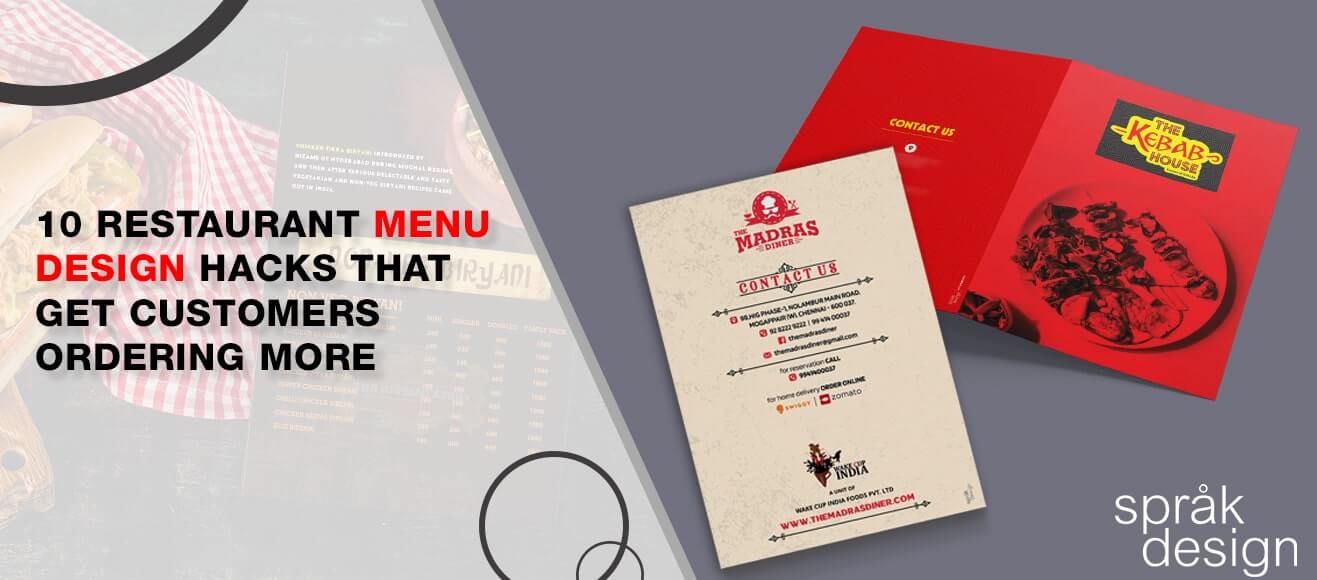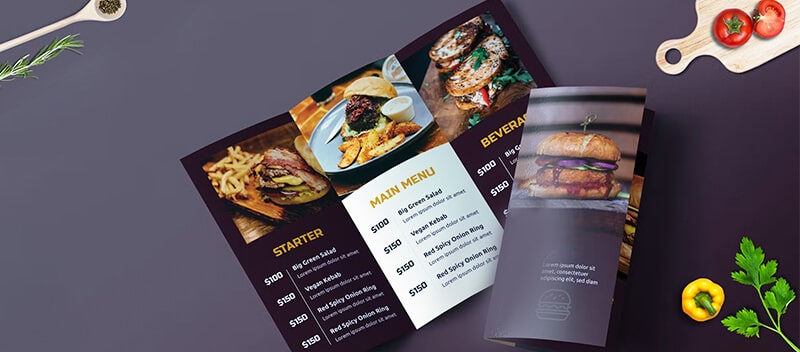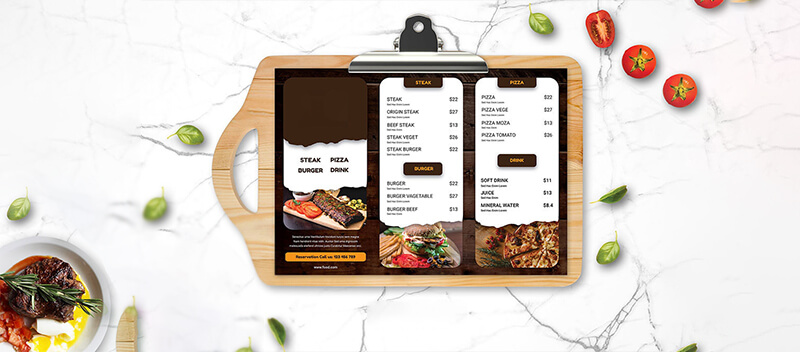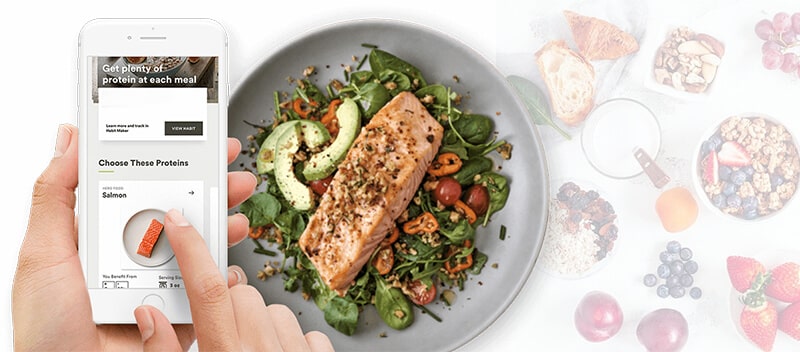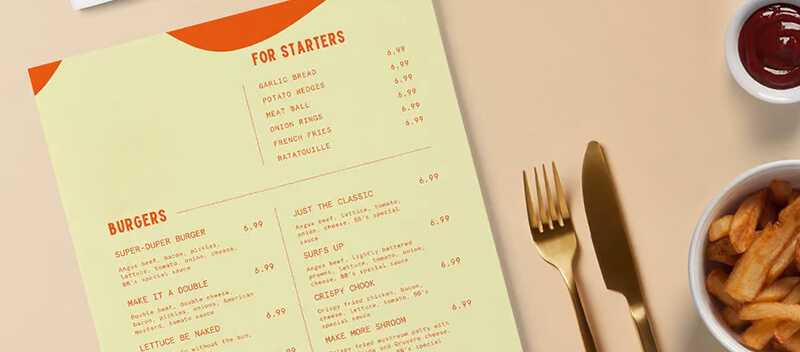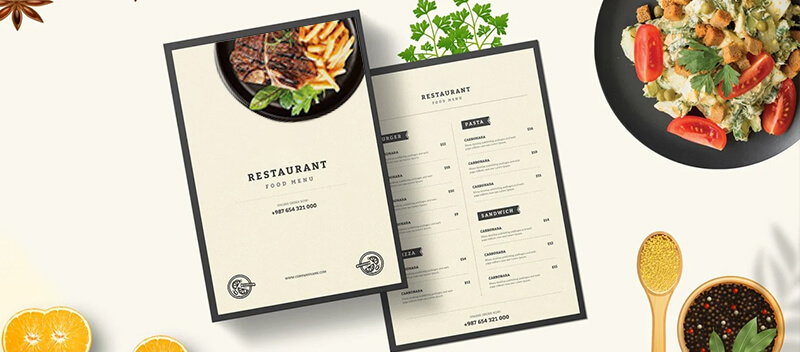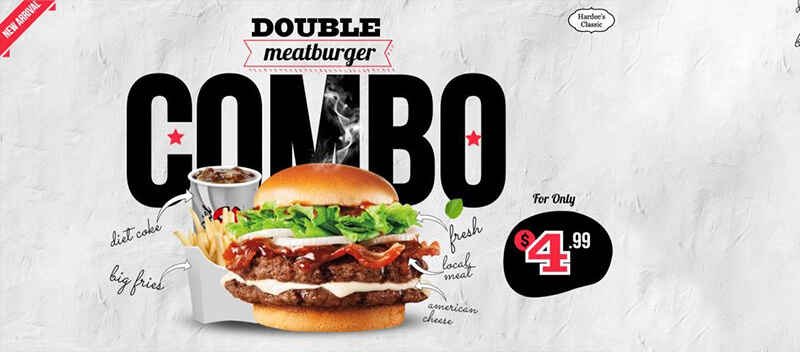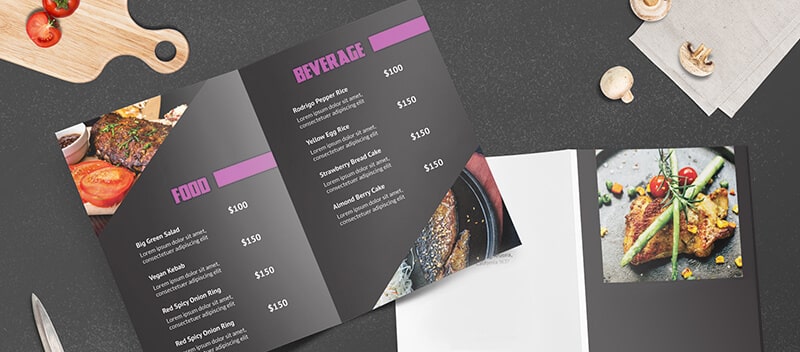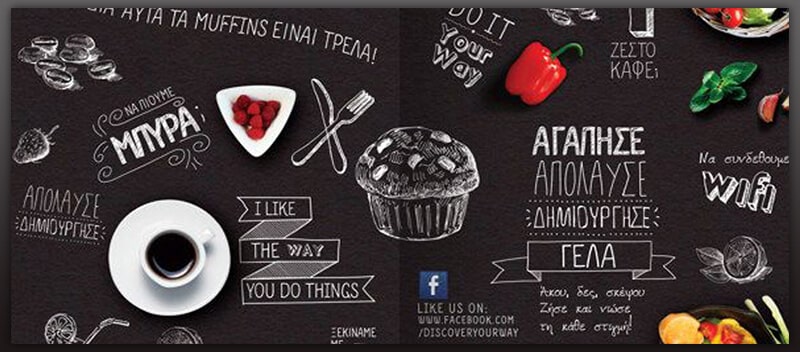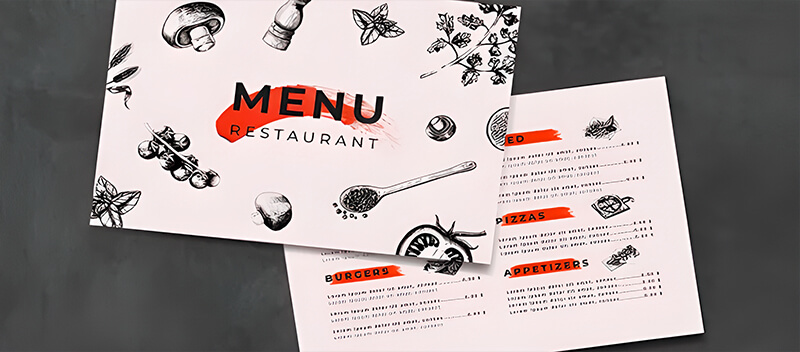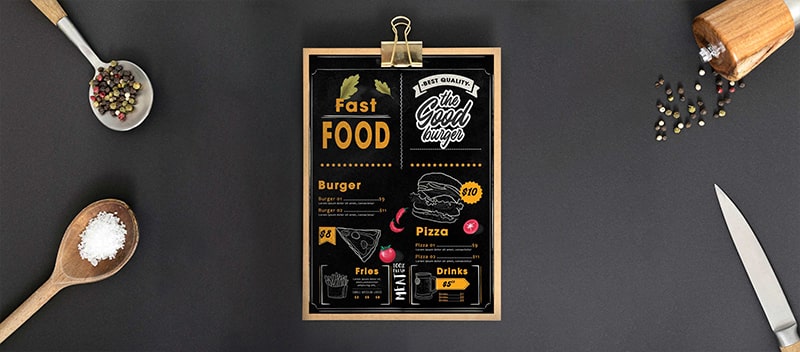10 Restaurant Menu Design Hacks that get customers ordering more
Last Update : 15 July 2022
Use These Restaurant Menu Design Hacks to Attract Customers
A good menu design is fundamental to a restaurant’s marketing plan. So, one must not undermine the importance of expressing the restaurant’s personality while designing it. This post gives you a comprehensive understanding of how to design menus that are oriented toward increasing customer orders. If you are planning to invest in a new menu design, this blog is a must read.
A menu establishes the budget, promotes profitability, and most importantly, keeps the brand fresh in a customer’s mind. The best menu design will summarize these five aspects:
- Effective marketing, communication, and cost control.
- Emphasizing the customer wants and a restaurant’s special items.
- Ensuring bottom-line return and realizing the sales goals.
- Leading to accurate forecasting of menu sales mix.
- Utilizing staff and equipment effectively.
So, without further delay, let’s learn about the best menu design hacks that can get customers to order more from you. And to demonstrate the significance of proper planning and researching, you must implement several design hacks to come up with the best menu designs.
1. Using Eye Magnets For Special or Most Recommended Items
A menu that features decorative frames can bring more attention from your customers. Using eye magnets such as shaded frames and boxes with dotted and solid lines is a huge perk. One can also incorporate elements like arrows and ribbons to help customers’ eyes travel down that page. These embellishments also offer your menu a nostalgic and old-fashioned vibe.
One quick note for effective menu designs: Using decorative illustrations inside a box can also draw eyes, encouraging customers to order more from that section.
2. Creating Sections Or Page For Sensory Food Images
Descriptive labels may be incredibly effective. One of the most influential approaches is categorizing different approaches as sensory, nostalgic, geographic, or even branded! For sensory food images, it’s best to create different sections or pages.
Keeping unique spaces for unique sections is a great idea. In such a way, you can include several types of dishes and attract more customers.
The best way to use this method is by comparing dishes tagged with sensory descriptions. You can use words like satin, tender, succulent, etc. Including nostalgic adjectives like home-styled, traditional, or Grandma’s collection can also indulge customers into ordering these dishes. Think of creative ways to attract customers before you start with any new menu design.
3. Limiting Choices for a Category – Offering More Customization Options
Personalizing your menu offers you an opportunity to use them in different combinations. A customized menu can streamline dishes, making it possible to maximize ingredients. In this manner, the restaurant does not rely on just one or two dishes to do the heavy lifting. In this manner, it maximizes the profits of a restaurant. If you are considering creating a new menu design, brainstorm and find a great narrative for your storytelling.
4. Add Descriptions That Build Anticipation
It’s not an exaggeration to state that descriptions of dishes are the heart of your menu. Therefore, a menu designer of a restaurant should work hard to get customers’ taste buds tingling by using descriptive phrases that are evocative, delicious, and appealing.
These days, conversational and engaging copywriting style descriptions are the new fad. If you use them in your menu, ensure that you make certain dishes shine. Use descriptions that keep your dishes’ names crisp and short. The writing should not be too flowery or wordy. In an effective menu design, descriptions focus on exactly what customers would love about the item.
5. Add a Bit Of Storytelling – Build “Connect” With Customers
Creating a story with your menu will make a whole lot of difference. But it holds prime importance to narrate a story that can appeal to your customers. It should encompass a literal story. Alternatively, you may use an implied narrative through design elements such as veggies, green leaves, or even stylized slices of pizza.
If the environmental consciousness gives importance to the supply-chain ecosystem, you can use words like locally-grown, authenticity, and more. Whatever you do to add a bit of storytelling, ensure that you narrate your restaurant’s commitment to sustainability. That makes your customers a part of the environmental responsibility.
6. Offer Combo Options That Make Higher Price Points Seem Affordable
Often referred to as a combo, a combination meal is the USP of every restaurant. It’s a type of meal that includes food items alongside beverages. However, the secret lies in how the meal designers plan the combo option for the customer. Dishes from menu combos are the best-selling ones of a restaurant. They are the much-selected choice of guests regardless of their pricing. So, including them in your restaurant is a mandate.
7. Use Colors That Stimulate Appetites
Psychology says that people respond to colors more than words. So, adding colors that stimulate people’s appetites is a great decision. According to the color theory, you require using it from an advertising point of view in the menu.
Since it is a menu, hues like blue and red will be great to trigger appetite. Instead of multi-coloring your menu with different shares, they opt for one shade that acts as the accent for the menu.
8. Create a Subtle but Emotional Visual Impact
Designers first study the verbal and visual psychology behind why people choose certain dishes. By using the information, they design their menus. If it’s your first time designing the menu for a restaurant, you can follow in their footsteps and do the same. Alternatively, you can use nostalgic elements to present powerful emotions with your visual impact.
9. Incorporate Innovative Ideas When Creating Logical Sections
Ensure to incorporate innovation when creating logical sections in the menu. Let’s take the example of photographs to understand this hack better. Whether or not images of dishes are an effective addition to the menu entirely depends on the restaurant type. And note that pairing a photo with each dish might not be a great trick.
10. The Messaging – Friendly, Courteous, Ethical
Being friendly, ethical, and courteous with your messaging is important when creating a superb restaurant menu. So, you must always ensure that you incorporate a cordial message with your menu. Also, make sure that you give importance to your menu descriptions. It must not be too flowery or wordy. Always ensure to add a crisp and short description.
Final Takeaway
Designing a restaurant menu is as important as the culinary job. The more beautifully you market your dishes, the better your customers know about them. After all, it’s valuable touchpoints that engage customers in a restaurant’s narrative.
Use menu designs to make an innovative new impact in your communication efforts and offer your customers more chances to engage with you.
Leverage Most Authentic Menu Designs from Språk Design
Consult with Språk Design for exceptional menu designs. Our menu designers are professionals with wide experience in delivering menu designs for restaurants of all sizes and types.
If you are in need of a new menu design for your growing restaurant business, look no further than Språk Design.

